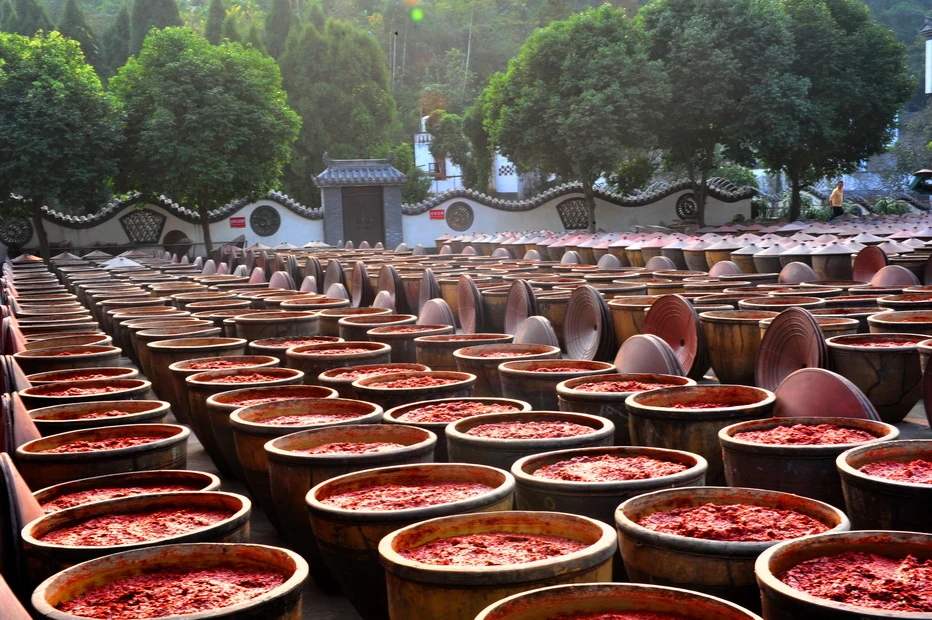The Time-Honored Delicacy – Linjiang Temple Douban from Ziyang, Sichuan
Introduction:
As a gastronomic professional, I have always been fascinated by the intricate world of regional cuisines that have stood the test of time. One such culinary gem, steeped in history and tradition, is the Linjiang Temple Douban from Ziyang, Sichuan Province. This unique condiment, originating from the Qing Dynasty, has been an essential part of Sichuan cuisine, adding depth and complexity to countless dishes. Let’s delve into the origins, cultural background, ingredients, and the distinctive characteristics of this fermented bean paste.
Origins and Cultural Background:
The Linjiang Temple Douban traces its roots back to the Qing Dynasty, where it was first created in the town of Linjiang Temple. This region is known for its fertile soil and ideal climate, which are conducive to growing high-quality broad beans, the main ingredient of this condiment. Over the centuries, the art of fermenting these beans has been passed down through generations, becoming an integral part of Sichuan’s culinary heritage. The process not only preserves the beans but also enhances their flavor, making them a versatile and indispensable ingredient in Sichuan cooking.
Ingredients and Preparation:
The Linjiang Temple Douban is made from carefully selected, high-quality broad beans (also known as fava beans or horse beans). The beans are first soaked, then cooked until they are tender. After cooking, they are left to cool and are then mixed with a specific type of mold, known as Aspergillus oryzae, which initiates the fermentation process. This fermentation, which can take several months, transforms the beans into a paste with a rich, umami flavor.
Taste and Texture:
The taste of Linjiang Temple Douban is complex and robust. It carries a deep, savory flavor with a hint of sweetness, which is balanced by a pleasant sourness from the fermentation process. The texture is smooth and creamy, with a slightly grainy feel from the fermented beans, providing a satisfying mouthfeel that coats the tongue.
Visual Description:
The appearance of Linjiang Temple Douban is distinctive. It is a dark, reddish-brown paste with a glossy sheen, reflecting the rich, concentrated flavors within. When spread, it reveals a speckled pattern of the fermented beans, which adds to its rustic charm.
Representative Dishes and Cuisines:
Linjiang Temple Douban is a key ingredient in many classic Sichuan dishes, such as Mapo Tofu, twice-cooked pork, and fish dishes like Shui Zhu Yu (poached fish in chili oil). Its deep, savory flavor profile complements the heat and spiciness of Sichuan cuisine, enhancing the overall taste experience.
Culinary Characteristics:
The unique fermentation process of Linjiang Temple Douban gives it a distinct umami flavor that is hard to replicate. This umami richness, combined with its ability to absorb and carry other flavors, makes it a versatile condiment that can elevate the taste of a wide range of dishes. Its robust flavor also pairs well with the strong, spicy notes characteristic of Sichuan cuisine, making it a perfect match for dishes that require a bold, savory kick.
In conclusion, Linjiang Temple Douban from Ziyang, Sichuan is more than just a condiment; it is a symbol of culinary tradition and a testament to the region’s rich food culture. Its unique fermentation process and the resulting complex flavors make it an indispensable component in the repertoire of any Sichuan chef, and a must-try for food enthusiasts seeking to explore the depth and diversity of Chinese cuisine.
